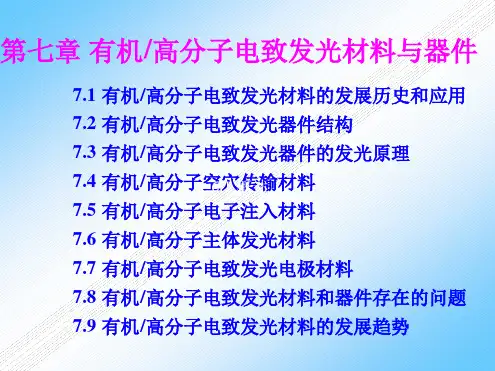高分子电致发光材料共75页
- 格式:ppt
- 大小:7.28 MB
- 文档页数:75


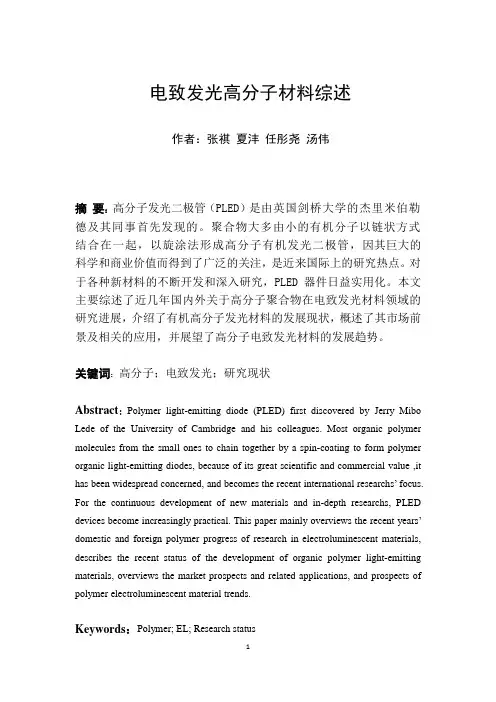
电致发光高分子材料综述作者:张祺夏沣任彤尧汤伟摘要:高分子发光二极管(PLED)是由英国剑桥大学的杰里米伯勒德及其同事首先发现的。
聚合物大多由小的有机分子以链状方式结合在一起,以旋涂法形成高分子有机发光二极管,因其巨大的科学和商业价值而得到了广泛的关注,是近来国际上的研究热点。
对于各种新材料的不断开发和深入研究,PLED器件日益实用化。
本文主要综述了近几年国内外关于高分子聚合物在电致发光材料领域的研究进展,介绍了有机高分子发光材料的发展现状,概述了其市场前景及相关的应用,并展望了高分子电致发光材料的发展趋势。
关键词:高分子;电致发光;研究现状Abstract:Polymer light-emitting diode (PLED) first discovered by Jerry Mibo Lede of the University of Cambridge and his colleagues. Most organic polymer molecules from the small ones to chain together by a spin-coating to form polymer organic light-emitting diodes, because of its great scientific and commercial value ,it has been widespread concerned, and becomes the recent international researchs’ focus. For the continuous development of new materials and in-depth researchs, PLED devices become increasingly practical. This paper mainly overviews the recent years’domestic and foreign polymer progress of research in electroluminescent materials, describes the recent status of the development of organic polymer light-emitting materials, overviews the market prospects and related applications, and prospects of polymer electroluminescent material trends.Keywords:Polymer; EL; Research status1.绪论信息技术,纳米技术,生物技术被誉为21世纪的最具前景的三大技术,它们将会给人们的生活方式带来彻底的改变。
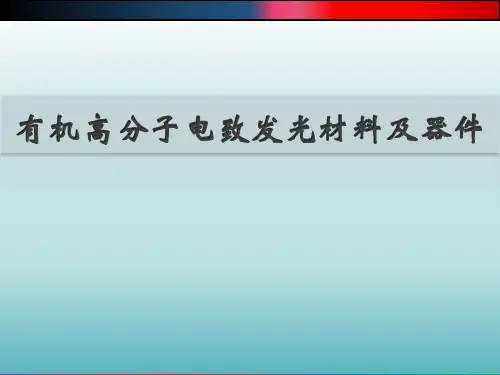
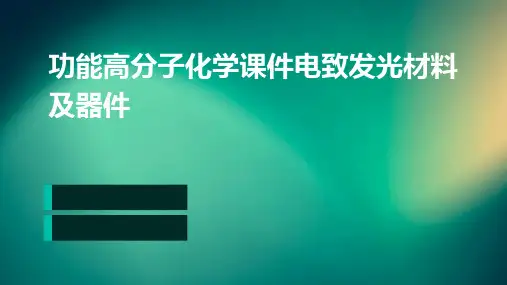

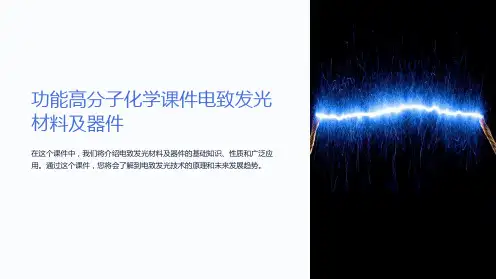
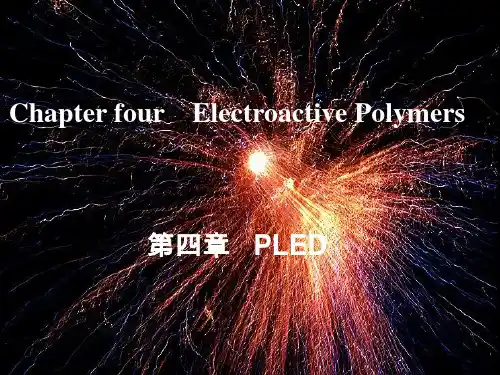
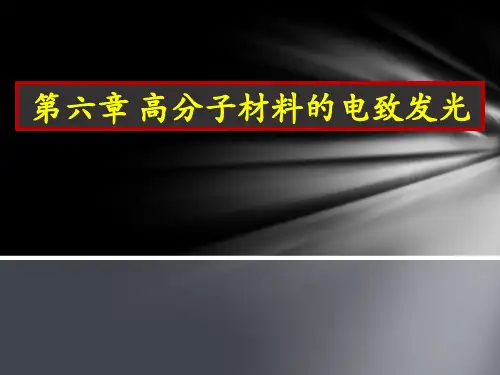
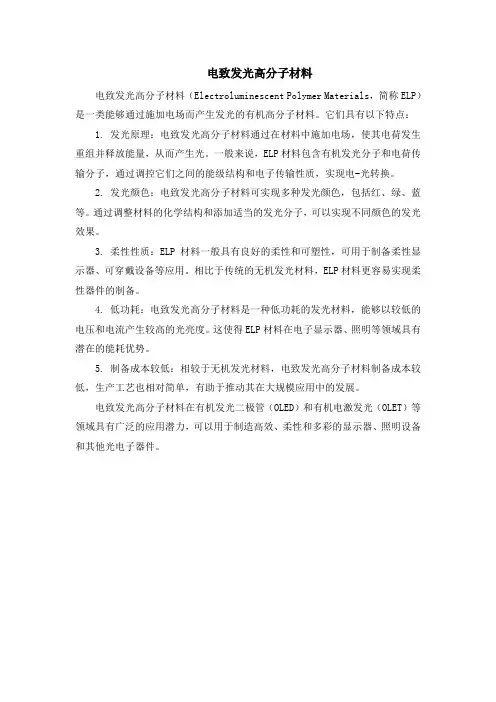
电致发光高分子材料
电致发光高分子材料(Electroluminescent Polymer Materials,简称ELP)是一类能够通过施加电场而产生发光的有机高分子材料。
它们具有以下特点:
1. 发光原理:电致发光高分子材料通过在材料中施加电场,使其电荷发生重组并释放能量,从而产生光。
一般来说,ELP材料包含有机发光分子和电荷传输分子,通过调控它们之间的能级结构和电子传输性质,实现电-光转换。
2. 发光颜色:电致发光高分子材料可实现多种发光颜色,包括红、绿、蓝等。
通过调整材料的化学结构和添加适当的发光分子,可以实现不同颜色的发光效果。
3. 柔性性质:ELP材料一般具有良好的柔性和可塑性,可用于制备柔性显示器、可穿戴设备等应用。
相比于传统的无机发光材料,ELP材料更容易实现柔性器件的制备。
4. 低功耗:电致发光高分子材料是一种低功耗的发光材料,能够以较低的电压和电流产生较高的光亮度。
这使得ELP材料在电子显示器、照明等领域具有潜在的能耗优势。
5. 制备成本较低:相较于无机发光材料,电致发光高分子材料制备成本较低,生产工艺也相对简单,有助于推动其在大规模应用中的发展。
电致发光高分子材料在有机发光二极管(OLED)和有机电激发光(OLET)等领域具有广泛的应用潜力,可以用于制造高效、柔性和多彩的显示器、照明设备和其他光电子器件。
